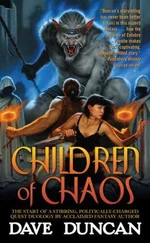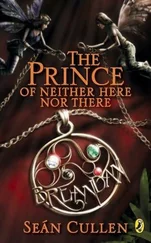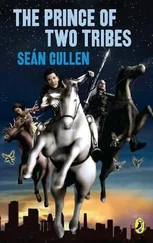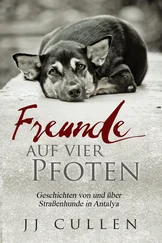“Fire!” Eric screamed:Most of the scenes in this chapter came from Eric’s school assignments, recalling his youth. I chose material he returned to repeatedly.
CHAPTER 22. RUSH TO CLOSURE
Ministers, psychiatrists, and grief counselors cringed:The Denver Post headline was merely the most appalling example of early proclamations of healing. They were everywhere. I interviewed a great number of ministers, psychiatrists, and grief counselors during those first weeks, as well as over the following nine years. From the beginning, virtually all thought the premature assessments were a terrible mistake.
a throbbing teen prayer mosh:I was present for the mosh, which went on for several minutes. The Rocky Mountain News featured a giant photograph of the incident. Whenever possible in this book, I checked my observations against photographs, television footage, and news accounts by other journalists.
“I smell the presence of Satan”:I attended the worship services where Reverends Oudemolen and Kirsten are quoted. I obtained additional information by interviewing them, attending services periodically for months, listening to cassettes of other sermons by Reverend Oudemolen, and enrolling in Bible study at West Bowles Community Church, with the consent of Reverend Kirsten, who led the class.
Most of the mainliners:I interviewed a few dozen local ministers, as well as countless attendees of local Sunday services during the first few weeks of the aftermath. A powerful consensus developed against active recruitment in most congregations and among most ministers. The scene described by Barb Lotze came from my interview with her and was confirmed by many students attending.
The kids kept pouring into the churches:Huge numbers of students described meeting up at the churches that week.
They turned the corner:DeAngelis and Fuselier independently described this scene in separate interviews with me.
They traced Dylan’s TEC-9:Information on the TEC-9 ownership came from the search warrant for Manes’s bank records. The relevant descriptions are on JC-001-025739.
Detectives interviewed Robyn:Robyn’s interrogation was documented in great detail in her police report. It devoted twenty single-spaced pages to the back-and-forth of the questioning. The passages in italics are paraphrases of her statements. This same report laid out her activities the previous day and her admissions about what she knew and when she suspected Eric and Dylan’s involvement. Eventually, she confessed to strong suspicions early in the shooting, so there was little reason to doubt her.
CHAPTER 23. GIFTED BOY
By third grade:Many sources cite Dylan as starting in second grade, but he did not transfer to Governor’s Ranch Elementary School until third. Tom and Sue Klebold provided many of the details of Dylan’s early life in their report.
Judy first saw him:The creek bed scene was described by Judy Brown during my interview with her and her husband. Dylan’s quote was from her recollection. The incident matched many relayed by reliable people who knew Dylan as a boy and through high school. I chose this one because it encapsulated much of Dylan’s early experience and fragile psyche.
They celebrated Easter and Passover:Tom and Sue described their religious and family background in their police report. Reverend Marxhausen filled in details during interviews with me. Dylan’s writings and videos provided more.
Tom described Dylan:Tom’s quote came from his police report. He also described Dylan as being sheltered in the CHIPS program.
CHAPTER 24. HOUR OF NEED
He organized a vigil:Depictions of the vigil and the funeral came from my interviews with Reverend Marxhausen. Additional information came from his statements in news reports.
CHAPTER 26. HELP IS ON THE WAY
when the first shot hit him:Dave Sanders’s four-hour ordeal was painstakingly documented before I covered that aspect of the story, so I corroborated existing accounts with sources from both sides of the eventual lawsuit, as well as the 911 tapes released by Jeffco. On most points, they concurred. The police issued voluminous reports documenting the department’s take, and for the Sanderses’ side I relied most heavily on Angela Sanders’s legal team, which researched the case for months and eventually prevailed. This included interviews with lead attorney Peter Grenier, his excellent thirteen-page summary of the case after it was over, and the forty-two-page complaint filed in April 2000. The report by the governor’s review commission and the accounts in the Rocky and the Denver Post were extremely helpful in providing additional details, especially the Rocky ’s “Help is on the way: mundane gave way to madness…” In interviews, Linda Sanders and several friends of Dave’s provided their perspective on what happened.
hurl a chair:This incident comes from the Sanderses’ lawsuit and the case summary by their attorney Peter Grenier. It is consistent with other accounts.
CHAPTER 27. BLACK
He started shopping:The killers’ friends gave fairly consistent accounts of their style of dress, in police interviews and media interviews. These are corroborated by videos the killers shot of themselves and by details scattered throughout their writings—for example, Eric mentioned that he had taken to shopping at Hot Topic and the surplus store.
For Halloween:Police believe Dutro got the first duster, but reports conflict, because no one was really tracking it at the time. Other accounts have Thaddeus Boles kicking off the trend. Boles was an acquaintance of the killers.
CHAPTER 28. MEDIA CRIME
We remember Columbine:To gauge national print coverage, I analyzed every news story published in the first two weeks, as well as hundreds of later stories from the following papers: the Denver Post , Rocky Mountain News , New York Times , Washington Post, and USA Today . I also studied a large number from AP, Reuters, and other sources. The two local papers each created a special Columbine archive online, recording all their stories, which allowed me to gauge the frequency of their coverage for the next several years and ensure that I did not miss anything.
The killers were quickly cast:The scenes in Clement Park in this chapter and all related quotes came from my observations and audiotapes. Much of it was published in my stories that week for Salon. The stories concerning “the rumor that won’t go away” were by me.
Salon published:“Misfits Who Don’t Kill” was produced by YO! (Youth Outlook) .
There’s no evidence:Mr. D’s quotes are from my interview with him July 4, 1999, and were published in the August/September issue of 5280, Denver’s city magazine. The pierced-out girl was Jo-Lee Gallegos, a senior I interviewed in June and quoted at greater length in the same story. I talked to hundreds of students in the months after the tragedy, and Gallegos was one of the few I could find with a negative impression of Mr. D, though the killers’ friends were lying low. Gallegos joined the majority in praising DeAngelis’s behavior after April 20. “He really made it a point to reach out to everyone after that,” she said.
CHAPTER 29. THE MISSIONS
Читать дальше







